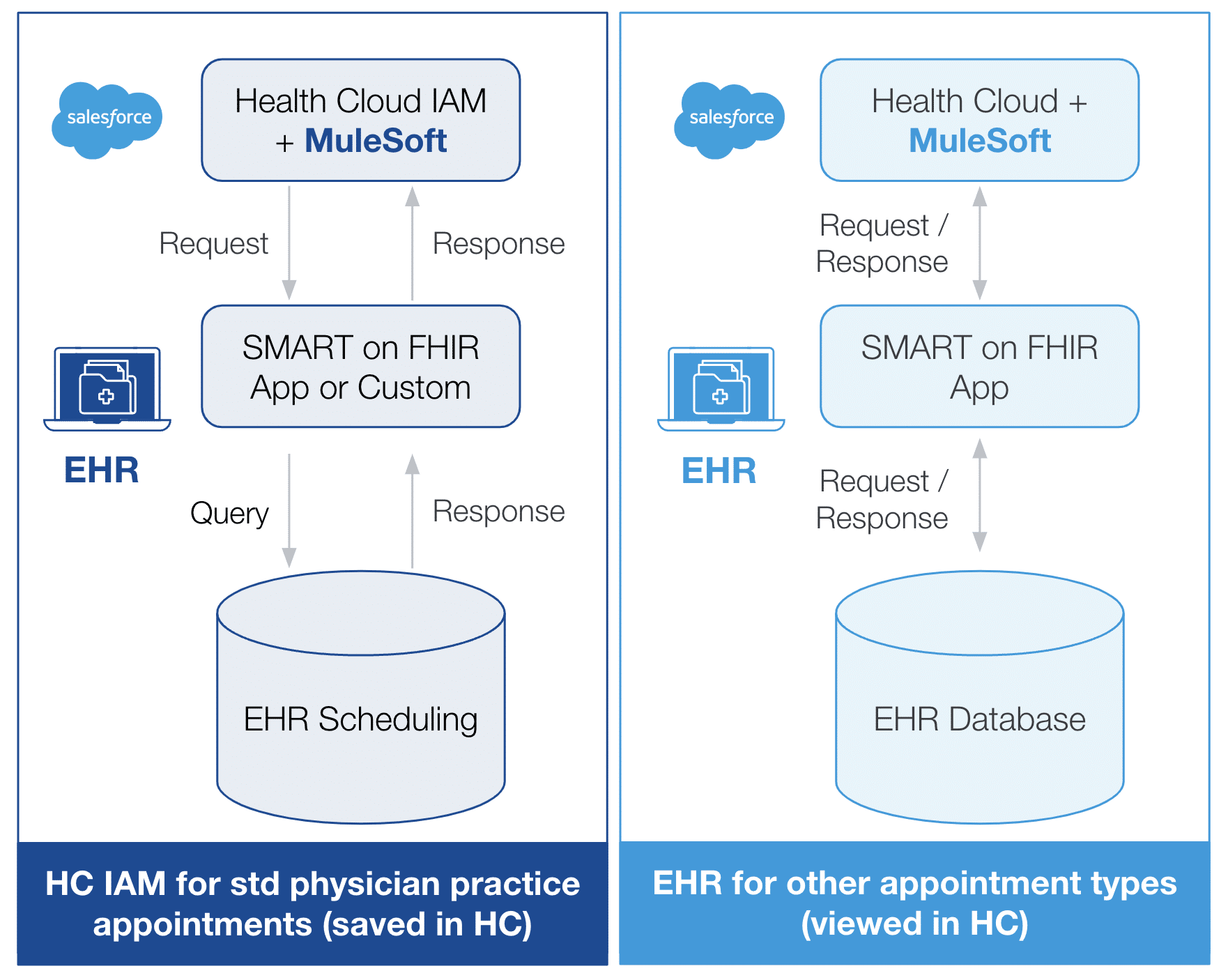Reading Time: 4 minutes
Healthcare organizations must connect various disparate systems – EHRs, practice management systems, LIM systems, ERPs, and medical devices – to deliver the positive experiences that patients want and expect. Interoperability in healthcare is necessary for a cohesive, patient-centric approach that drives patient satisfaction, prevents errors, accelerates care coordination, and improves health outcomes.
Yet many healthcare organizations still need help to achieve the IT maturity required to benefit from delivering connected experiences. MuleSoft assessed the state of IT maturity of its healthcare and life sciences customers and found:
- 85% of healthcare and life sciences customers are using APIs for shared services, with 81% reporting top-level support for reuse
- 63% of customers reported executive sponsorship and governance of integration projects within the organization
- 46% of customers have a documented software development methodology that is grounded in agile principles, while 73% have implemented processes that allow for self-service and enablement
While these numbers are good, healthcare organizations still have a long way to go. Silverline recommends implementing the MuleSoft platform to accelerate an organization’s Salesforce journey and unlock the value of Health Cloud through readily deployable integration patterns.
MuleSoft, the world’s #1 integration and API platform, makes connecting data from any system easy. Here, we share ways organizations can leverage MuleSoft for healthcare to deliver connected experiences that drive efficiency and create a single view of every patient.
1. QuickStart for Patient 360: Integrate demographics with EMR
A 360-degree view is essential for providing the optimal level of service patients expect today. However, many providers struggle to achieve this view because patient data is stored across different sources. MuleSoft QuickStart for Patient 360 brings together the data by bi-directionally integrating patient demographics with EMR. Providers can deliver personalized care with key demographics, consent, social determinants, and communication preferences available directly in the Salesforce Health Cloud console at the point of service by rapid integration with their EHR system of record.
Healthcare organizations do not have to deal with duplicate patient records as this solution supports real-time registration of patients (with FHIR-enabled EHRs) and record merges (for HL7 v2 EHRs) to ensure the highest quality of patient demographic data in Health Cloud. The demographic data can be utilized in account verification and insurance validation flows to deploy a highly secure and compliant patient access center.
Healthcare organizations also benefit from this data in patient outreach use cases, such as closing gaps in care. Appointment scheduling workflows can be streamlined based on patient demographics, like recommending pediatricians to young patients, and sending SMS appointment reminders only to patients who have opted in for such notifications.
2. Patient acquisition: Seamless integration for patient marketing
The Salesforce Healthcare and Life Sciences Insights report found a significant gap between the experiences patients want or expect and the experiences providers deliver. Patients want a complete view of their health from providers (94%). Yet less than half (32%) of providers are able to meet this expectation.
Unmet patient expectations often reflect a healthcare organization’s internal data integration challenges. MuleSoft enhances patient acquisition data by integration with Health Cloud via Person Account and Consent APIs. The Marketing Cloud Connector syncs patient contact and consent information from Health Cloud to Marketing Cloud.
The MuleSoft approach ensures a seamless integration with online member and patient inquiry web forms to support digital patient engagement and marketing, including:
- Consumer-to-patient conversion
- Onboarding
- Context-specific patient communication
- Patient retention and loyalty journeys
- Patient outreach reminders
- Signups to group events and educational seminars
3. Patient clinical and diagnostics data: Inbound integration for emergency response management, contact tracing, or patient outreach
Almost half of healthcare and life sciences leaders cited inaccessible or siloed data as a roadblock. This is a critical issue when it comes to integrating inbound clinical and diagnostics data, such as lab results, for emergency response management, contact tracing, or patient outreach to address barriers to chronic and transition care.
MuleSoft integrates with ORU events from the clinical system of record and saves them as EHR Observation (or similar FHIR object) in Health Cloud. For example, personalized patient outreach can be implemented in Marketing Cloud by segmenting the population based on diagnostics results, like patients infected with Hepatitis C.
Users can also develop read-only components or utilize Salesforce Accelerators to display a patient’s clinical information, such as medications or allergy intolerances, to augment the 360-degree view and enable triage nurses to provide care following protocols such as Schmitt-Thompson. The solution can also be deployed using MuleSoft Direct with Health Cloud through the Generic FHIR Client and extended as required for your EHR data model.
4. Appointment scheduling: Systems integration with EHR
According to the Salesforce Connected Health Consumer Report, consumers prefer interacting via phone calls, websites, or portals when it comes to routine or generic tasks like scheduling appointments. By integrating patient data with MuleSoft, providers can deliver a seamless appointment scheduling experience.
MuleSoft supports integration between Health Cloud and EHR for two scenarios. The first scenario involves EHR as the scheduling engine and Health Cloud Intelligent Appointment Management as the front end to enable agents to schedule standard physician practice appointments such as annual wellness checks. MuleSoft endpoints are configured in IAM for APIs such as Get Available Slots, Get Slot Status, and Create Appointment, and ensure that appointments are saved simultaneously in the EHR and Health Cloud.
The second scenario involves EHR acting as the scheduling engine as well as the front-end application used by agents to schedule complex appointment types like recurring appointments or appointments involving multiple providers. MuleSoft supports rapid integration with FHIR endpoints to surface such appointments through low-code and no-code components in Health Cloud.
The Silverline team leverages insight acquired through 10+ years in the business and thousands of engagements, along with real-world expertise gained across the healthcare industry, including provider, payer, medical devices, and life sciences. Find out how Silverline can guide you through every phase of your Salesforce and MuleSoft journey.




